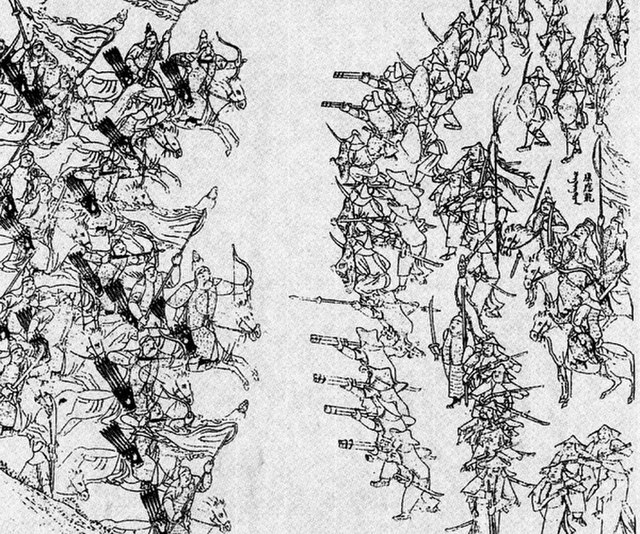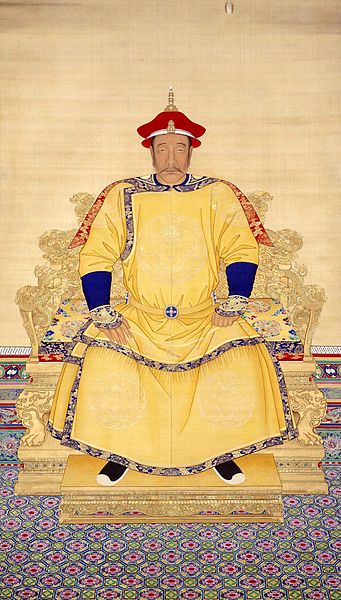Hong Taiji, also rendered as Huang Taiji and sometimes referred to as Abahai in Western literature, also known by his temple name as the Emperor Taizong of Qing, was the second khan of the Later Jin dynasty and the founding emperor of the Qing dynasty. He was responsible for consolidating the empire that his father Nurhaci had founded and laid the groundwork for the conquest of the Ming dynasty, although he died before this was accomplished. He was also responsible for changing the name of the Jurchens to "Manchu" in 1635, and changing the name of his dynasty from "Great Jin" to "Great Qing" in 1636. Hong Taiji could have been a Manchu of Mongolian origin, being the son of Yehe Nara Monggo Jerjer, or genetically related to the Mongols as a member of the Aisin-Gioro clan.
Portrait in the Hong Kong Palace Museum
Hong Taiji in regular clothing.
Statue of Hong Taiji in Beiling Park
The Later Jin, officially known as Jin or the Great Jin, was a Jurchen-led royal dynasty of China in Manchuria and the precursor to the Qing dynasty. Established in 1616 by the Jianzhou Jurchen chieftain Nurhaci upon his reunification of the Jurchen tribes, its name was derived from the earlier Jin dynasty founded by the Wanyan clan which had ruled northern China in the 12th and 13th centuries.
Later Jin (后金) c. 1626 shown in light green
Later Jin cavalry charging Ming infantry in the Battle of Sarhū.
Official portrait of Nurhaci, the founder of the Later Jin dynasty.
Official portrait of Hong Taiji, the second khan of the Later Jin dynasty and subsequently the founder of the Qing dynasty.






